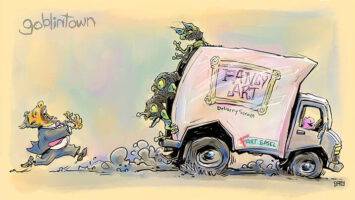NFT art is a term with a bag of opportunities and profits associated with it. Anyone who is passionate about NFTs can create them and sell them from any part of the world. Apart from making impressive capital, they can boost the profits via royalties on future sales.
Now the question is how to enter into the world of NFT art and how to create it? The internet is full of tips and tricks for you to try your hands on, but if you want to explore every side of NFT art, we recommend giving this piece of article a read.
We will begin with a step-by-step guide on how to create NFT art and move forward to unveil more amazing information.
How to create an NFT art?
- Select your item
- Choose your blockchain
- Set up a digital wallet
- Pick an NFT marketplace
- Mint your NFT art
Take a look at the below steps to find out how to do it.
1. Select your item
Pick up a unique digital asset that can be transformed into a non-fungible token. It could be a photograph, a meme, a tweet, any video, GIF, or anything else; however, it must be rare enough to have a top-notch rarity value and stand apart from other NFT arts.
The object to be converted into an NFT must be legally allowed to avoid unnecessary legal troubles. Also, if the NFT artwork has 3D graphics, a marketplace that supports 3D files has to be chosen.
2. Choose your blockchain
Blockchain technology is a must to both create and develop the NFT and has an effect on how customers engage with the art.
Not only are blockchains incorruptible, but they are also possible to distribute over an extensive range of networks. The technology is safe and transparent in terms of sharing the work.
A number of blockchain platforms are available to develop an NFT. Some of the best ones include:
- Ethereum
- Solana
- Polygon
- Binance Smart Chain (BSC)
- Tezos
- Cardano
- Flow
- Worldwide Asset Exchange (WAX)
- Polkadot
- Tron
Cost of transaction, speed of transaction, scalability, security, and functionality are the key factors to consider while choosing a blockchain.
3. Set up a digital wallet
Setting up a digital wallet is required before creating non-fungible tokens. It is a type of bank account meant for cryptocurrency and stores private and public keys that are utilized to access non-fungible tokens.
There are two types of accounts available:
- Custodial wallets: They run via a third party.
- Self-custody wallets: These are the safest since users have overall control on private keys.
Some of the leading crypto wallets to store as well as exchange NFTs are:
- Math Wallet
- Coinbase Wallet
- Trust Wallet
- Enjin Wallet
- Kukai Wallet
- Alpha Wallet
- Metamask Wallet
- Coinomi
4. Pick an NFT marketplace
Next, comes the turn to pick the right NFT marketplace that eases issuing, creating, and selling the NFTs. It’s important to know that certain marketplaces have their own currencies.
The rules, offerings, and needs of each marketplace differ from others; hence, careful research is important to find the best marketplace according to the NFTs.
The token standard utilized by the platform, token fractionalization, incentives, the verification process for users, the availability of a price discovery feature, etc. are a few important things to consider.
Leading NFT marketplaces include:
- OpenSea
- Nifty Gateway
- Rarible
- SuperRare
- Mintable
- ThetaDrop
- NBA Top Shot
- Foundation
- Larva Labs/CryptoPunks
- Axie Infinity
5. Mint your NFT art
After selecting the platform, the art token has to be minted to create a rare digital asset that is able to be traded or sold in the open market. To mint an art token, creating an account on the marketplace and linking it to the wallet is required. The artwork can be added after this, and tokens can be minted.
While minting an NFT, the gas fee is essential as a payment to the miners who are behind processing and confirming the transaction.
The last step in the minting process is monetizing the NFT. Based on the platform, it is possible to:
- Setting a timed auction – This provides buyers with a deadline to submit the highest offer they can.
- An unlimited auction – There’s no limit of time to submit the highest offer. It is the artist’s choice as to when to stop the auction.
- Fixed price – The NFT is given to the first buyer who is willing to pay the decided amount.
Bonus tip from the editorial team to help promote your NFT collection
6. Promote your NFT art
To give an NFT its true recognition and worth, promotion is undeniably the key and can be done in multiple ways. Some of the best suggestions are listed below:
- Create a Website
Creating a website is probably the best way to display the NFTs and share detailed information with potential buyers.
- Promote on Social Media
Social platforms such as YouTube, Twitter and Instagram are the best mediums to share updates and news regarding the NFTs. Promoting the NFTs before minting them is the way to generate curiosity among the masses.
- Write Blogs
Sharing the information through blogs is another way to connect with potential buyers and highlight the NFTs.
- Join Discord
To reach the audience that might be interested in the particular NFT, joining Discord servers is a great move.
- Collaboration
Having a social media influencer or successful brand to promote the NFTs can widen the reach.
- NFT Calendar
To create awareness about the NFT, an NFT calendar is of great support. Adding the collection to the calendar is the way to inform others about the NFT.
- Online Communities
Participating in online communities dedicated to digital assets and NFTs is another recommendation to connect with more and more people in the industry and find out more about the ongoing trends.
- Press Release
Writing a press release and sending it to magazines, publications, newspapers and art journals is helpful to target the right audience.
- Consider Auctions
Auctions are also a phenomenal way to generate interest in NFTs and let potential buyers have exposure to the NFT being sold.
How do artists benefit by creating NFT art?
Artists have multiple benefits upon creating and selling NFT art. Without depending on a third-party or art gallery, they can showcase their art and reach the target audience directly. Check out more ways in which NFT art benefits artists.
- Ownership
When an NFT of an artwork is minted, a rare token is produced. The metadata that’s related with the token gets added to the blockchain and turns immutable, which means that copying or modifying the data is impossible. Having said that, the NFT works like a record of origin as well as a proof of authenticity.
- Money from royalties
Smart contracts power NFTs, something that enables artists to include automatic royalties. NFT artists get 5-10% of each sale, an income that is distributed into their wallet directly. This way, the proceeds are distributed in a justified way, and artists need not worry about the income they need for survival.
- Enhanced accessibility
Since anyone can purchase, create as well as sell NFTs, there are low barriers in terms of entry to enable artists to introduce their own art into any marketplace. Artists are free to create and sell their work to a wide audience and that too on their own terms.
- Global market
The NFT marketplaces are based on online platforms; thus, they simplify the way to access sellers, buyers, and creators on a global level. Artists can cross worldwide boundaries and trade easily. Also, since the content remains online and is possible to be traded within a few clicks, add-on fees like shipping fees are kept at bay. All this makes the process affordable and hassle-free as compared to the conditions an artist needs to meet while selling through a traditional gallery.
Top NFT art creators and their expensive art
1. Pak
Pak launched his NFT art collection ‘Merge’ in December 2021. The collection was sold for USD 91.8 million and grabbed the spot among the most expensive collections.
2. Beeple
Beeple is counted among the most popular NFT artists. His NFT collection, “Everydays: The First 5000 Days,” was sold for $69.3 million in March 2021.
3. Tyler Hobbs
Hobbs’ most popular NFT collection is Fidenza, which made USD 177 million and was created in October 2021. Another NFT collection, “Incomplete Control,” was sold for USD 7 million prior to being dropped.
4. XCOPY
The renowned NFT artist created buzz for his open edition collection, “Max Pain.” Within 10 minutes, the collection was sold for $23 million.In August 2021, Today NFT News compiled the 10 Best Selling NFT Art By Top Artists.
FAQs
An NFT stands for non-fungible token and is created by utilizing the same type of programming that’s used for cryptocurrencies. An NFT is blockchain-based and cannot be traded or exchanged like other cryptographic assets.
Anyone can create an NFT, though it needs significant work; hence, an interest in NFTs and digital assets is a must to enjoy the process and learning.
Creating an NFT artwork could be free if lazy minting is used. Speaking of standard NFTs, they differ in terms of the cost of gas fees needed to generate them as well as their registration on a blockchain.
Follow the steps mentioned in this article, and you are good to create an NFT image.
There’s a significant fee to create and sell an NFT. The fee is known as the “gas fee” and might range from $10 to $1,000 based on the chosen NFT marketplace and blockchain.









